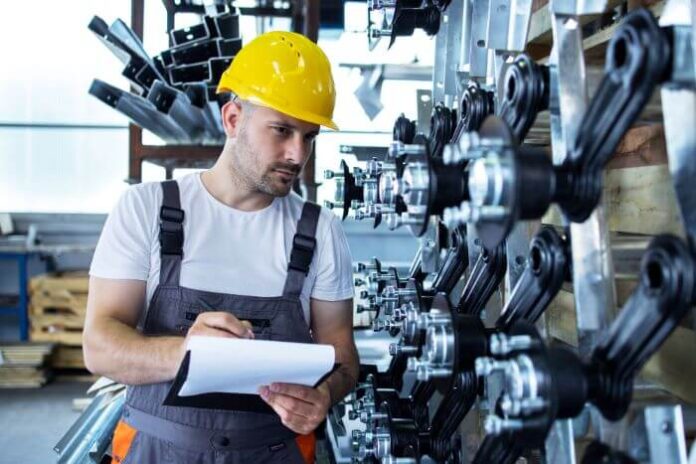In manufacturing, equipment plays a pivotal role in determining the efficiency, quality, and scalability of operations. As industry dynamics evolve and machinery becomes more expensive, many businesses are looking for alternatives.
Leasing manufacturing equipment has emerged as a viable solution, offering flexibility and reduced upfront costs. But before you consider this option and seek financing options, there are key considerations to bear in mind. Read on to find out more.
1. Assess Your Long-Term Needs
Before committing to any lease, analyze your company’s long-term equipment needs. Think about the nature of your projects. Will you need this equipment for a short project or an extended period? Consider the following:
- Project Duration: Will the majority of your projects be short-term, lasting a few weeks or months, or are they more extensive, spanning years? This distinction can greatly influence whether leasing or purchasing is more beneficial.
- Company Growth: As your company expands, your equipment needs might change—factor in potential scalability and if the leased equipment can accommodate future growth.
Leasing may seem cost-effective for short-term projects. But for long-term needs, consider the cumulative costs over time. Make a calculated decision based on your company’s projections.
2. Understand The Total Costs
Leasing might initially appear to be a more affordable option due to reduced upfront costs. However, it’s crucial to account for all potential charges over the life of the lease. The obvious ones are monthly lease payments, but there are other potential fees that can accumulate over time:
- Upfront Fees Or Deposits: Some leases require an initial deposit or a one-time upfront fee. This could range from 1% to 10% of the total equipment value, depending on the leasing company and equipment type.
- End-Of-Term Costs: At the end of your lease, you might incur fees for wear and tear, or for not returning the equipment in its original condition. On average, these costs can be anywhere from 2% to 5% of the equipment’s initial value.
- Maintenance Fees: While some leasing agreements include maintenance, others might charge additional fees, especially for damage that goes beyond regular wear and tear. This can be a flat fee or based on actual repair costs.
- Insurance: Many leasing companies require you to insure the equipment, and this could be an added monthly or annual expense.
- Penalties: Fees for early termination or overuse can vary widely, but expect them to be steep. For instance, early termination fees might range from 3 months’ worth of lease payments up to the remaining balance of the lease.
These numbers are just averages and can vary based on the vendor and type of equipment. However, having a ballpark figure can be helpful in your budgeting process. To avoid unforeseen expenses, always request a detailed cost breakdown from your leasing company and compare it with these industry averages.
3. Know The Lease Agreement Terms
Every lease agreement is different. Get a finance expert’s advice so you can familiarize yourself with the terms and conditions. Not just the obvious details, but the fine print too. Some key aspects to watch for include:
- Duration: How long is the lease term? Is it a fixed period, or can it be renewed upon expiration?
- Purchase Options: Are there provisions allowing you to buy the equipment at the end of the lease term? If so, at what price?
- Maintenance Responsibilities: Who’s responsible for repairs and routine maintenance? Some leases might require the lessee to cover these costs, while others might fall on the lessor.
Understanding these nuances ensures that you won’t face unexpected challenges or costs in the future. Always read thoroughly, and don’t hesitate to ask questions about any terms you find unclear.
4. Examine Equipment Condition And Maintenance
You don’t want equipment that breaks down constantly. When financing equipment, make sure it’s in good condition and well-maintained. Some leasing companies offer maintenance as part of the lease package. It’s worth considering these offers as they can save you time and money in the long run.
5. Check For End-Of-Lease Options
As you near the end of your lease term, you might decide to buy the equipment or extend the lease. Check for these end-of-lease options beforehand. Knowing what choices you have can help you plan for the future more effectively.
6. Prioritize Vendor Reputation
Not all leasing companies are created equal. Do your homework. Look for reviews, ask for references, and speak to other businesses that have used the vendor. You want a vendor that’s reliable, reputable, and responsive to your needs.
Conclusion
While leasing manufacturing equipment can offer numerous benefits like cost savings, flexibility, and access to top-tier equipment, it’s crucial to approach the decision with diligence. By considering the factors listed above and aligning them to your company’s specific needs, you’ll be better equipped to make a smart, informed decision about leasing. Remember, it’s all about ensuring the choices you make align with your business goals and offer the most value in the long run.







